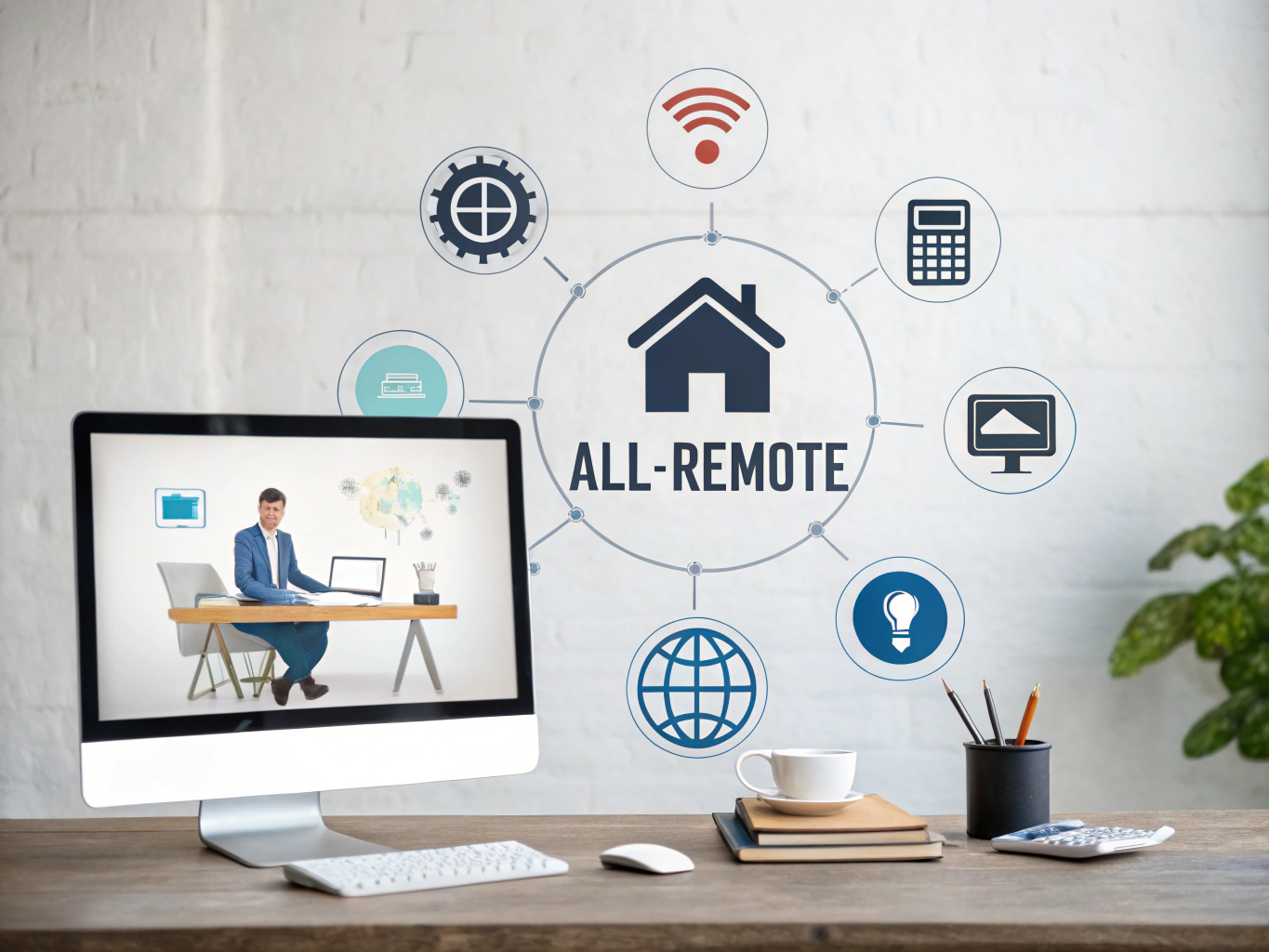Definition
All Remote is a flexible work arrangement where employees operate from anywhere in the world, completely bypassing the need for a physical office. This setup empowers teams to connect and collaborate through technology, creating a truly global workforce.
Key Components
Understanding the core elements of an All Remote work environment is essential for both HR professionals and job seekers alike. Here are some key components that shape this modern workplace:
- Remote Communication: All Remote teams thrive on technology for collaboration. Tools like Zoom, Slack, and Asana become vital lifelines for daily interactions, project updates, and brainstorming sessions, ensuring that distance doesn’t hinder productivity.
- Flexible Work Hours: With team members possibly scattered across multiple time zones, flexible work hours are a norm. This means that employees can choose when they work, allowing them to align their schedules with personal productivity peaks and life commitments.
- Strong Trust and Accountability: In an All Remote setup, there’s no manager peering over shoulders. This necessitates a culture of trust and accountability, where team members feel empowered to take ownership of their tasks and responsibilities without constant oversight.
- Focus on Outcomes: Rather than clocking in hours, All Remote teams prioritize results. Success is measured by the completion of projects and the achievement of goals, not by the time spent logged into a system.
- Emphasis on Company Culture: Building a strong company culture in a remote environment is crucial. Organizations often engage in virtual team-building activities, regular check-ins, and online social events to foster camaraderie and a shared sense of purpose.
Importance in the Workplace
All Remote work is not just a trend; it’s reshaping how companies operate. For instance, companies like GitLab and Buffer, which have embraced this model, report higher employee satisfaction, reduced overhead costs, and access to a broader talent pool. Imagine being able to hire the best talent regardless of geographic location—this is the power of All Remote.
In practice, consider a software development team that operates All Remote. They can easily integrate developers from different countries, bringing diverse perspectives and skills to the table. This diversity can enhance creativity and innovation, providing the company with a competitive edge in the market.
Best Practices
Successfully navigating an All Remote work environment requires thoughtful strategies. Here are some best practices to consider:
- Invest in Technology: Equip your team with the best tools for project management and communication. Platforms like Trello or Microsoft Teams can streamline collaboration, keeping everyone on the same page.
- Establish Clear Expectations: Make sure every team member understands their roles, responsibilities, and deadlines. Regular check-ins can help clarify tasks and keep everyone aligned.
- Prioritize Work-Life Balance: Encourage employees to set boundaries between work and home life. This can include designated work hours and regular breaks to prevent burnout.
- Foster Inclusion: Be proactive about including all team members in discussions and decisions. Use rotating meeting times to accommodate various time zones, ensuring everyone has a chance to participate.
- Celebrate Achievements: Recognition goes a long way in remote settings. Celebrate individual and team accomplishments publicly to boost morale and reinforce a sense of belonging.
Legal Considerations
When implementing an All Remote model, it’s vital to consider legal implications. This includes understanding labor laws that vary by country or state, such as wage laws, tax implications, and employee rights. For example, a company based in the U.S. hiring employees in Europe must navigate different employment laws and regulations regarding working hours and benefits.
It’s also important to ensure that contracts are clear about terms of employment, including remote work policies, data security, and confidentiality agreements, to protect both the company and its employees. Consulting with legal professionals experienced in international labor laws can provide essential guidance.
Conclusion
Understanding the All Remote work model is increasingly important as the workplace evolves. By embracing this setup, companies can tap into a diverse array of talent while allowing employees the flexibility they crave. Whether you’re an HR professional or a job seeker, grasping the nuances of All Remote can open up new opportunities and foster a more inclusive and productive work environment. As we move forward, it’s clear that All Remote is here to stay, making it crucial for all stakeholders to adapt and thrive in this new landscape.




